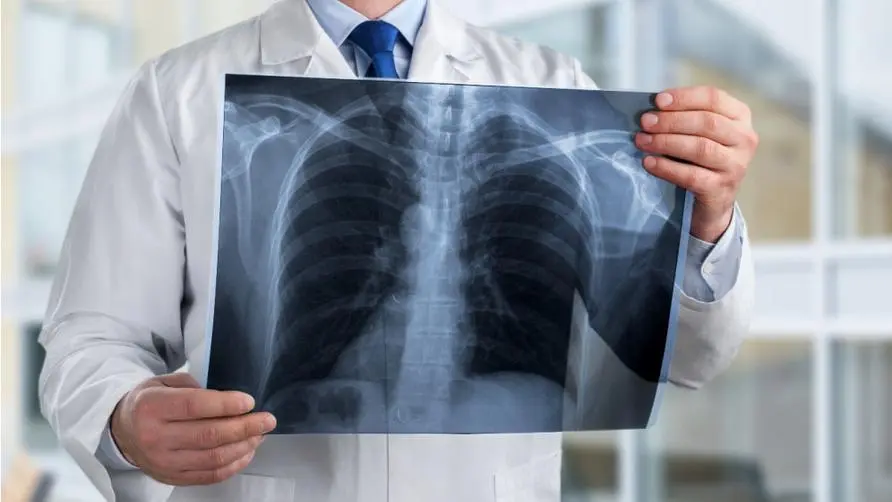If you have a cough with phlegm and a fever, beware of tuberculosis! Infectious routes, symptoms, and high-risk groups in one look

Is latent tuberculosis infection asymptomatic? Be careful if you have phlegm or chest pain after coughing for 2 weeks
If you have a cough that has not gone away for two weeks and you have chest pain and fever, should you be careful about tuberculosis? March 24 is World Tuberculosis Day every year. The World Health Organization’s prevention and control theme this year (2023) is “YES! WE CAN END TB!”, hoping to mobilize global efforts to eliminate tuberculosis (End TB) and achieve the goal of “eliminating tuberculosis” by 2035.
Wang Zhenyuan, chairman of the Taiwan Tuberculosis and Lung Disease Medical Association, explained that tuberculosis is transmitted through the air and droplets. Generally, people infected with tuberculosis bacteria have about a 5-10% chance of developing the disease. A person who has been infected but has sufficient immunity to remain in a state where the disease has not yet developed is called “Latent tuberculosis infection (LTBI)” (Latent tuberculosis infection, LTBI). Mycobacterium tuberculosis can remain latent in the host’s body for a long time, waiting for opportunities to cause disease. Generally, people who are infected have about a 5-10% chance of developing the disease in their lifetime, with the highest incidence rate within the first 2 years after infection. Latent TB infection is asymptomatic and not contagious, but it can develop and spread when the immune system is low.
Approximately 6,000 people in Taiwan are diagnosed with tuberculosis every year. If people have symptoms of suspected tuberculosis such as cough for 2 weeks, phlegm, chest pain, weight loss, loss of appetite, fever, etc., please seek medical treatment proactively for early diagnosis and treatment, and take medication for 6 to 9 months as a rule. It can cure and protect the health of yourself and your relatives and friends.
The public is reminded that to prevent tuberculosis infection, they should pay attention to environmental ventilation, maintain a healthy lifestyle, enhance immunity, and implement hygiene habits and cough etiquette. If latent tuberculosis infection is found during testing, they should receive treatment for latent tuberculosis infection as early as possible to prevent tuberculosis.
Pulmonary tuberculosis is more dangerous due to droplet and airborne blood sugar and poor kidneys
According to Taiwan Centers for Disease Control, tuberculosis is caused by an aerobic acid-resistant Mycobacterium tuberculosis and is a global chronic infectious disease, especially prevalent in developing countries. Cases occur throughout the year in Taiwan, with the incidence rate higher in men than in women and in the elderly than among young people.
The main transmission routes of tuberculosis are droplet and airborne infection. Mainly, patients with infectious tuberculosis produce droplets containing Mycobacterium tuberculosis when they spit, cough, talk, sing or laugh. If you accidentally inhale the droplet nuclei spread by the patient in the air, you may be infected, but it will not happen regularly. Infection from clothing or food utensils.
Tuberculosis infection often occurs between family members or close contacts who live in the same room. The length of contact with the patient and whether the shared environment is well ventilated are also important factors affecting the infection of tuberculosis bacteria. After healthy people are infected by tuberculosis bacteria, they usually do not become ill immediately. Once they become ill, common symptoms include coughing for more than 2 weeks, weight loss, fever, etc.
In addition to contacts, other risk factors that are likely to cause tuberculosis, such as diabetes, poor blood sugar control, elderly, immunocompromised, end-stage renal disease and other high-risk groups, if anti-tuberculosis drugs are given in a timely manner to treat latent infection, It can effectively reduce the chance of future disease.
The current treatment for latent tuberculosis infection is to give 1HP, 3HP, 3HR, 4R, 6H and 9H prescription treatments after physician evaluation, and receive public health care services, which can significantly reduce the risk of future disease. Experts remind that tuberculosis currently has effective anti-tuberculosis drug treatments. As long as you follow the treatment prescription rules provided by doctors, tuberculosis can be cured.
Taiwan’s tuberculosis incidence rate dropped by 60% to promote early intervention in post-epidemic era
In order to respond to the international goal of ending tuberculosis, Taiwan Centers for Disease Control held a press conference “YES! WE CAN!” today (3/24), vowing to work together to prevent and treat tuberculosis. Zhou Zhihao, deputy director of the Ministry of Health and Welfare, said that over the years, Taiwan’s tuberculosis prevention and control has been achieved through the joint efforts of the public health, medical, private sector, and various ministries and committees, and the incidence rate of new cases has dropped from 73 cases per 100,000 people in 2005 to 2022. About 28 cases, a cumulative decrease of 62%.
In order to accelerate the decline in the incidence of tuberculosis, the post-epidemic era will focus on early detection and intervention of suspected tuberculosis, as well as expanding testing and treatment of latent tuberculosis infection to prevent the occurrence of tuberculosis.
Taiwan Centers for Disease Control will continue to work closely across ministries and agencies, as well as with local governments, medical institutions, civil society, etc., to actively introduce new diagnosis and treatment or testing technologies and methods, and to use digital technology to implement various tuberculosis prevention and treatment measures. work and protect people’s health and safety.
Further reading:





